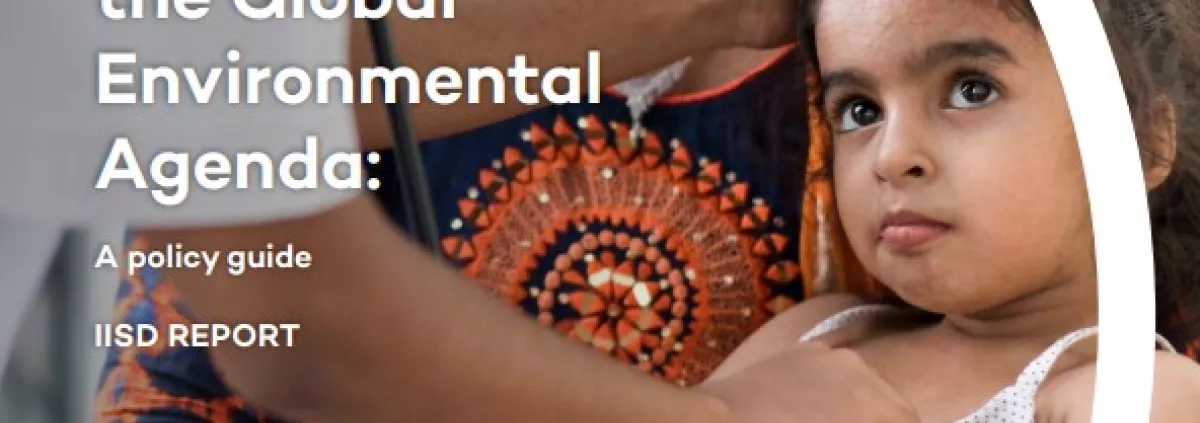While there is growing awareness of the steep health impacts of global environmental changes—including the climate crisis, accelerating biodiversity loss, and an increasing saturation of plastic and chemical wastes—bringing the health and environment sectors together for joint action is easier said than done.
This policy guide provides meaningful, succinct, and targeted information to enable health experts to engage in and follow global environmental processes at an elevated level, focusing on intersections where policy approaches could incorporate health and well-being issues. The report's goal is to create a bridge so experts on environmental agreements contribute to robust health policy, while health professionals strengthen environmental agreements—all while inviting a broad landscape view of Planetary Health and sustainable development.
Source: https://www.iisd.org/publications/health-global-environment-agenda-policy-guide

Very important report on the health-environment nexus. For UNDP, it would be additionally important to understand how multidimensional poverty is implicated in this nexus.
Exposure to environmental hazards and their impacts on health is greater in conditions of poverty. As summarised in the (Sida) Health and Environment. Issue Paper (https://www.sida.se/en/publications/health-and-environment-issue-paper) some years back: People living in poverty are the ones that mainly suffers from ill-health caused by environmental hazards. 30% of the burden of disease in the poorest countries has been attributed to environmental factors.
Major health issues relate to home environments, which are more hazardous in conditions of poverty. Direct human exposure to environmental health hazards decrease with increasing distance to environmental insult, as summarised in the book chapter on Urban Transitions and the Spatial Displacement of Environmental Burdens (https://pubs.iied.org/sites/default/files/pdfs/migrate/10545IIED.pdf), the Urban Systems chapter (http://www.millenniumassessment.org/documents/document.296.aspx.pdf) of the Millennium Ecosystem Assessment and discussed in relation to wastewater (https://www.water-alternatives.org/index.php/alldoc/articles/vol11/v11i…). High-income populations are protected by the infrastructure in wealthy areas and the geographic distance to localised environmental hazards.
UNDP could consider organizing more around geographic scale to ensure cross-sectoral cross-fertilization as well as persistent solidarity with the most vulnerable.
Please log in or sign up to comment.